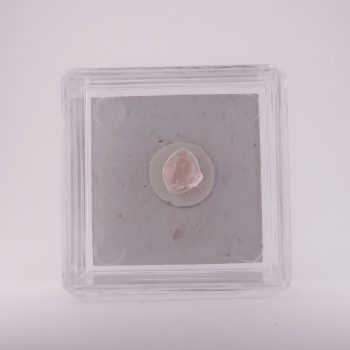Morganite
Morganite is a pink or peachy pink variant of Beryl. The higher grade pieces are cut, polished, and used as a gemstone.
It is quite a pale pink stone, and I personally think it looks best in Silver or rose Gold jewellery. Morganite is used either as a mineral specimen or a gemstone.
Showing the single result
Appearance
Morganite is a gorgeous pink or a salmon pink variety of the gemstone Beryl.
It is typically translucent or transparent, although lower quality pieces are sometimes opaque due to inclusions and cloudiness.
Morganite is somewhat unusual in that it often occurs in large crystals, but smaller crystals with good colour are significantly rarer. Most pieces are cut large to maximise the colour, which can make them less desirable for jewellery usage.
Uses and History
Morganite is used as a gemstone, being a high quality variant of Beryl.
It was named in 1910 after the American banker J. P. Morgan. One of the largest gem Morganite crystals ever discovered was found in Maine, USA – it measures around 30CM across and weighed around 23KG!
Locales
Morganite is found in a few countries worldwide, including Afghanistan, Brazil, Italy, Madagascar, Mozambique, Pakistan, Russia, and the USA.
Mineralogy
Hazards and Warnings
Almost all rocks, minerals (and, frankly, almost all other substances on earth) can produce toxic dust when cutting, which can cause serious respiratory conditions including silicosis.
When cutting or polishing rocks, minerals, shells, etc, all work should be done wet to minimise the dust, and a suitable respirator or extraction system should be used.
Translations
Arabic:
- مورغانيتي
Hindi:
Portuguese:
- morganita
Bengali:
Indonesian:
Punjabi:
English:
Italian:
Russian:
- морганита
French:
Japanese:
- モルガナイト
Spanish:
- Morganita
German:
- Morganit
Korean:
Thai:
Gujurati:
- મોર્ગેનાઇટ
Mandarin and Traditional Chinese:
- 红绿宝石
- 摩根石
Urdu:
- مورگانائٹ

